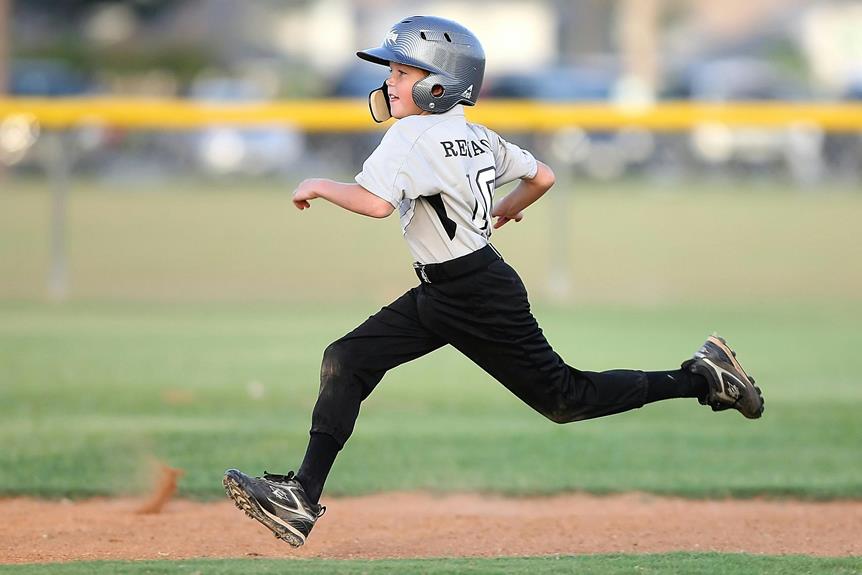
Rule changes in baseball have a significant impact on the game. They can drastically change strategies, shift gameplay dynamics, and enhance player safety measures. From equipment regulations to offensive strategies and pitching techniques, these adjustments shape the way the game is played. Additionally, rule changes can affect fan engagement, influencing how you experience baseball. If you want to uncover more about how these changes shape the sport you love, explore further into the intricacies of baseball's evolving rules.
Evolution of Equipment Regulations
In the world of baseball, understanding the evolution of equipment regulations is crucial for players and fans alike. Over the years, baseball equipment has undergone significant changes to ensure fairness, safety, and performance standards in the game. From the early days of wooden bats and minimal protective gear to the modern era of high-tech composite materials and specialized equipment, regulations have adapted to keep up with the evolving nature of the sport.
One key aspect of equipment regulations is the constant strive for a balance between offense and defense. Changes in bat materials, such as restrictions on the use of certain alloys or composites, have aimed to prevent an unfair advantage for hitters while still allowing for optimal performance. Similarly, regulations on protective gear like helmets and padding have been implemented to ensure player safety without hindering mobility or comfort.
As a player or fan, being aware of these equipment regulations can provide insights into the strategic decisions made on the field. Understanding the impact of equipment evolution on the game can deepen your appreciation for the intricacies of baseball and the measures taken to maintain its integrity.
Impact on Offensive Strategies
The evolution of equipment regulations in baseball has significantly influenced offensive strategies in the game. With restrictions on the design and composition of bats, hitters have had to adjust their techniques to generate power and hit for average. Modern bats are designed to reduce the trampoline effect, making it crucial for batters to rely more on proper swing mechanics and timing to drive the ball.
Moreover, rule changes such as the implementation of the designated hitter (DH) in some leagues have altered offensive strategies. The DH allows teams to have a dedicated hitter in the lineup instead of the pitcher, leading to specialized offensive roles and strategic substitutions. This change has influenced how managers construct their lineups and utilize their bench players throughout the game.
Furthermore, modifications to the strike zone have also impacted offensive strategies. A smaller or larger strike zone can influence hitters' approaches at the plate, causing them to be more selective or aggressive depending on the umpire's interpretation. These adjustments showcase how rule changes in baseball can shape the dynamics of offensive strategies and impact the overall gameplay.
Influence on Pitching Techniques
As offensive strategies in baseball have adapted to rule changes, pitchers have also been impacted in their techniques on the mound. With rules favoring hitters, pitchers have had to adjust to maintain their effectiveness. One key change is the crackdown on foreign substances used by pitchers to enhance grip and spin rates. This has forced pitchers to rely more on their natural abilities and refine their mechanics to maintain control and movement on their pitches.
Another significant impact on pitching techniques is the emphasis on pitch clock rules to speed up the pace of the game. Pitchers now have less time between pitches, requiring them to work faster and maintain their focus. This has led to pitchers developing quicker delivery routines and making faster decisions on pitch selection.
Moreover, changes in strike zones and umpire interpretations have also influenced how pitchers approach each at-bat. Pitchers must adapt their pitch sequences and locations to exploit any adjustments made by umpires or changes in the strike zone. Overall, pitchers have had to evolve their techniques to remain competitive in a game that continues to shift towards offensive strategies.
Changes in Player Safety Measures
Player safety measures have been significantly revised to mitigate injury risks in baseball. Major League Baseball (MLB) has implemented various changes to protect players from potential harm during games. One important adjustment is the concussion protocol, which mandates thorough evaluations for players who may have suffered head injuries. This protocol ensures that players receive proper medical attention and avoid further complications.
Another crucial safety measure is the introduction of protective gear enhancements. Players now have access to improved helmets and padding to safeguard themselves while on the field. Additionally, MLB has imposed stricter guidelines regarding player collisions to reduce the risk of concussions and other injuries that may result from high-impact contact.
Moreover, the league has focused on pitcher safety by monitoring pitch counts and innings pitched to prevent overuse injuries. By limiting the workload on pitchers, teams can help prevent arm injuries and prolong players' careers. Overall, these player safety measures demonstrate MLB's commitment to prioritizing the well-being of its athletes.
Effects on Fan Engagement
Enhanced safety measures in baseball have influenced how fans engage with the sport. The implementation of netting extensions along the baselines and around home plate has provided fans with a greater sense of security, allowing them to focus more on enjoying the game. By feeling safer at the ballpark, fans are able to relax and immerse themselves in the action on the field without worrying about foul balls or broken bats flying into the stands.
Moreover, rule changes aimed at speeding up the pace of play have had mixed effects on fan engagement. While some fans appreciate the quicker tempo of the game, others miss the leisurely pace that allowed for more social interaction and conversation during downtime. The introduction of replay reviews, while enhancing the accuracy of calls, has also led to longer breaks in the game, potentially affecting the overall fan experience.




